My Guide To Champaner – The Ancient City Of Gujarat
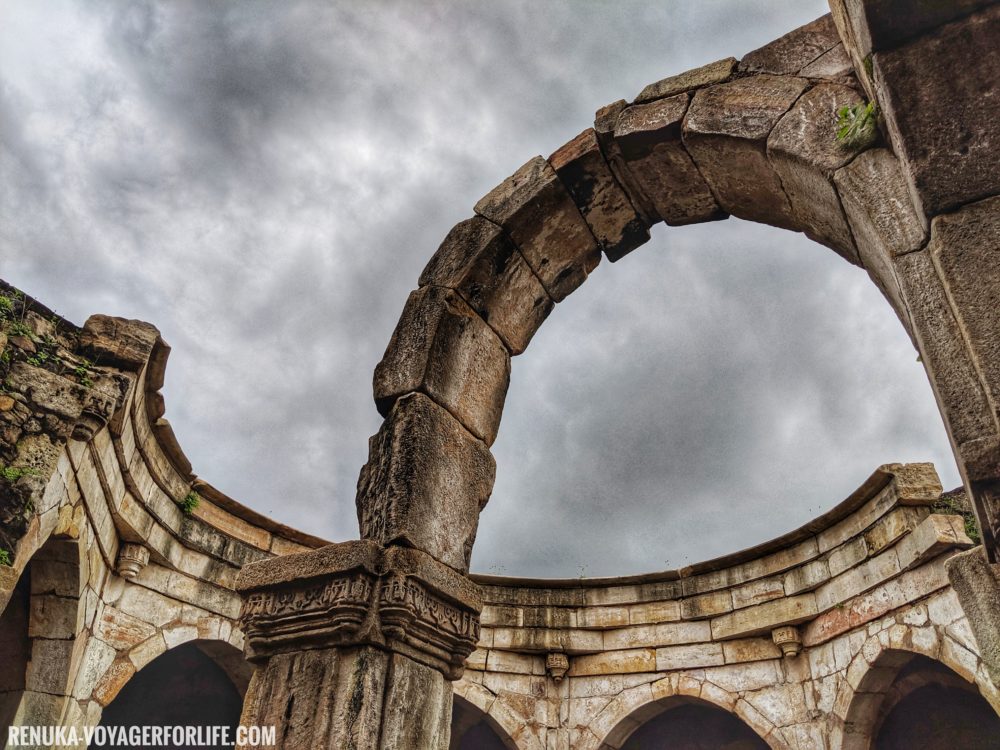
Champaner is a historic city in Gujarat. It’s an offbeat travel destination for inquisitive travellers. My travel guide is going to help you know the city, its heritage places, things to do, how to commute locally and where to stay in Champaner.
Ah, Champaner! Why did I even consider Champaner? To be honest, I never thought of it until I saw this ad by Gujarat Tourism where Amitabh Bachchan is shown marveling at the historic sights of Champaner. I was hooked on instantly! I didn’t have to think much. I booked my tickets pronto. Travel should be like that – like a bubble that blows beautifully in the air, but doesn’t disappear.
So, Champaner was kind of a surprise, which landed in my lap. I had no plans to visit Gujarat this year. I had been to Kutch in 2015, and it was one of my most fabulous solo trips in India.
You can read My Guide To Kutch – Top 5 Experiences and get inspired to experience Gujarat.
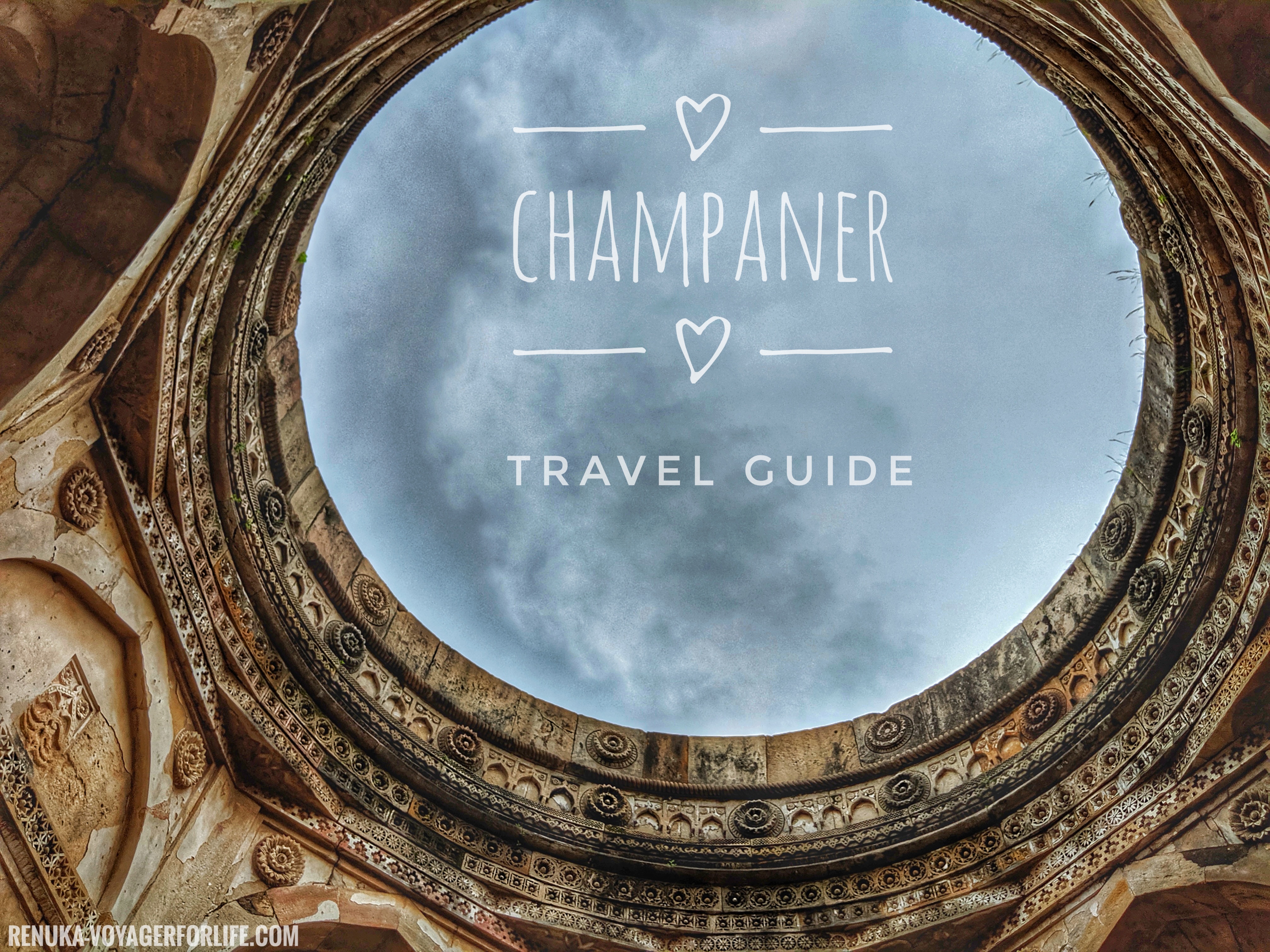
Champaner is awe-inspiringly historic. Also, Champaner-Pavagadh Archaeological Park is a World Heritage Site by UNESCO. A few interesting facts that you should know about Champaner are:
- Champaner’s original name was Muhammadpur, and it was the capital of the Sultanate of Gujarat for a short period of time.
- Champaner is as old as the 8th century.
- It was named Champaner by the king after the name of a general Champa aka Champaraj.
So yes, if you love history and architectural heritage, Champaner is a great find for you. But, that’s just one aspect of it. Champaner is not just a heritage destination. It’s also a place for nature and countryside enthusiasts like me. There’s so much of lushness and many rural charms to revere.
My Guide To Champaner – Things To Do & See
The Masjids on the Halol-Pavagadh Road
There’s something so fascinating about all the ancient mosques of Champaner. The first Masjid that you will come across on the Halol-Pavagadh Road is Ek Minar Ki Masjid, which, as the name suggests, is a mosque with just one pillar. It’s unique in its own way, and its beauty is enhanced by the backdrop of mountains.
Other masjids that I visited were Jami Masjid, Shaher ki Masjid, Kevada Masjid, Bawaman mosque and Kamani Masjid. There are so many mosques and temples that you might want to skip a few, which is fine. There was something different about visiting sites like Kamani Masjid and Kevada Masjid, as they were quite deserted and exuded a bit of eeriness. And, it was quite adventurous on my part to visit them alone. It gets a little difficult to reach these sites during the monsoons.
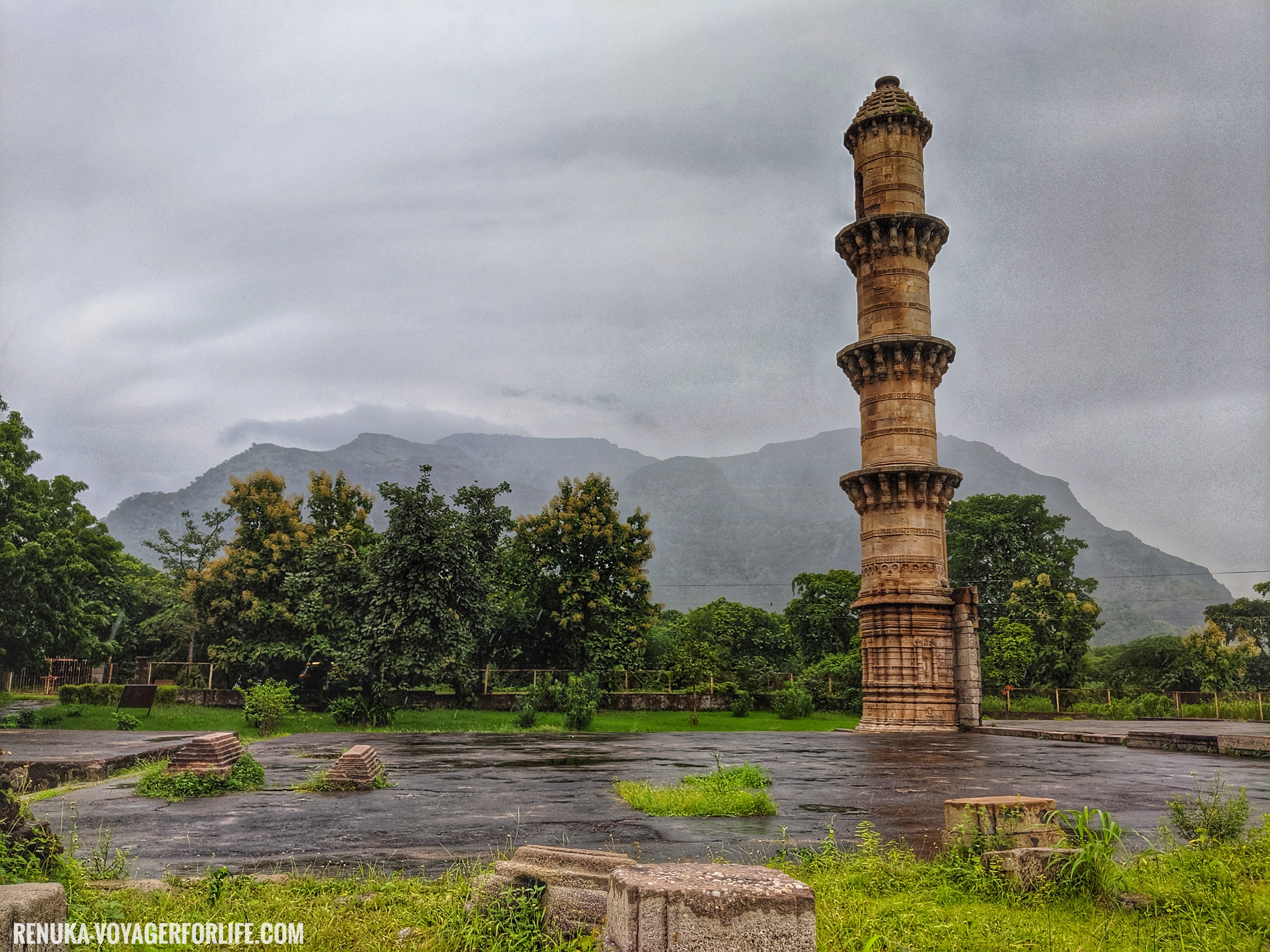
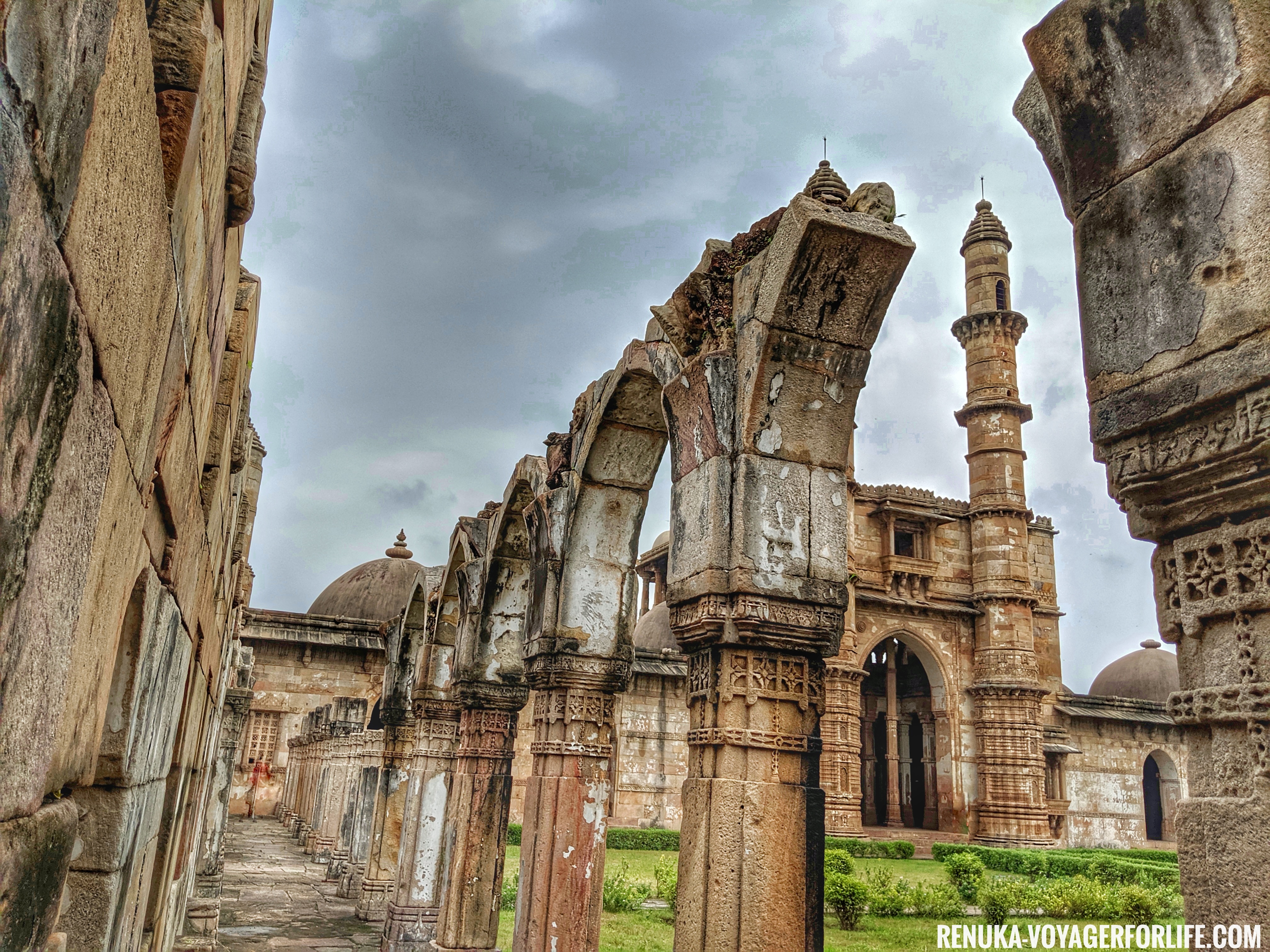
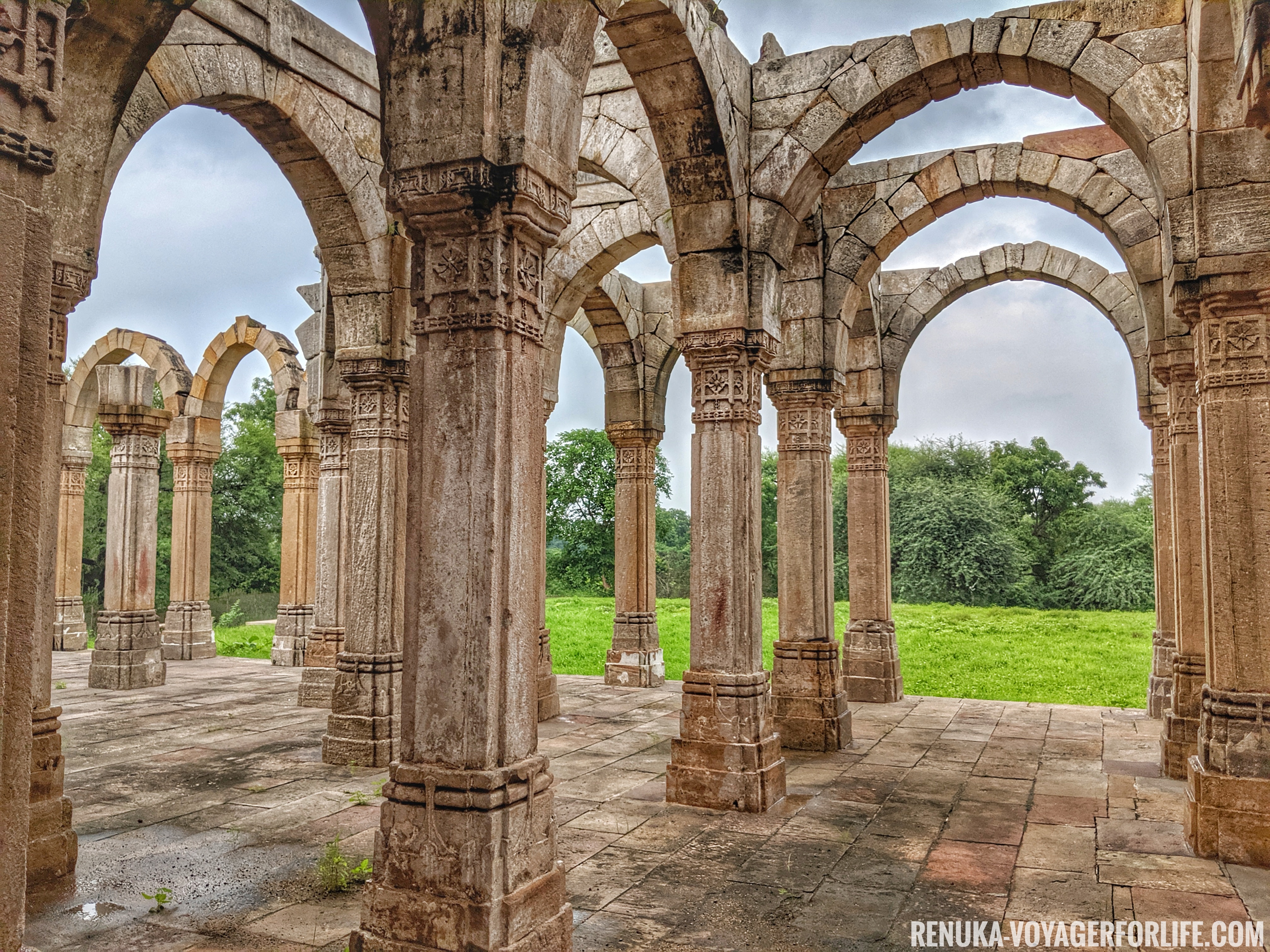
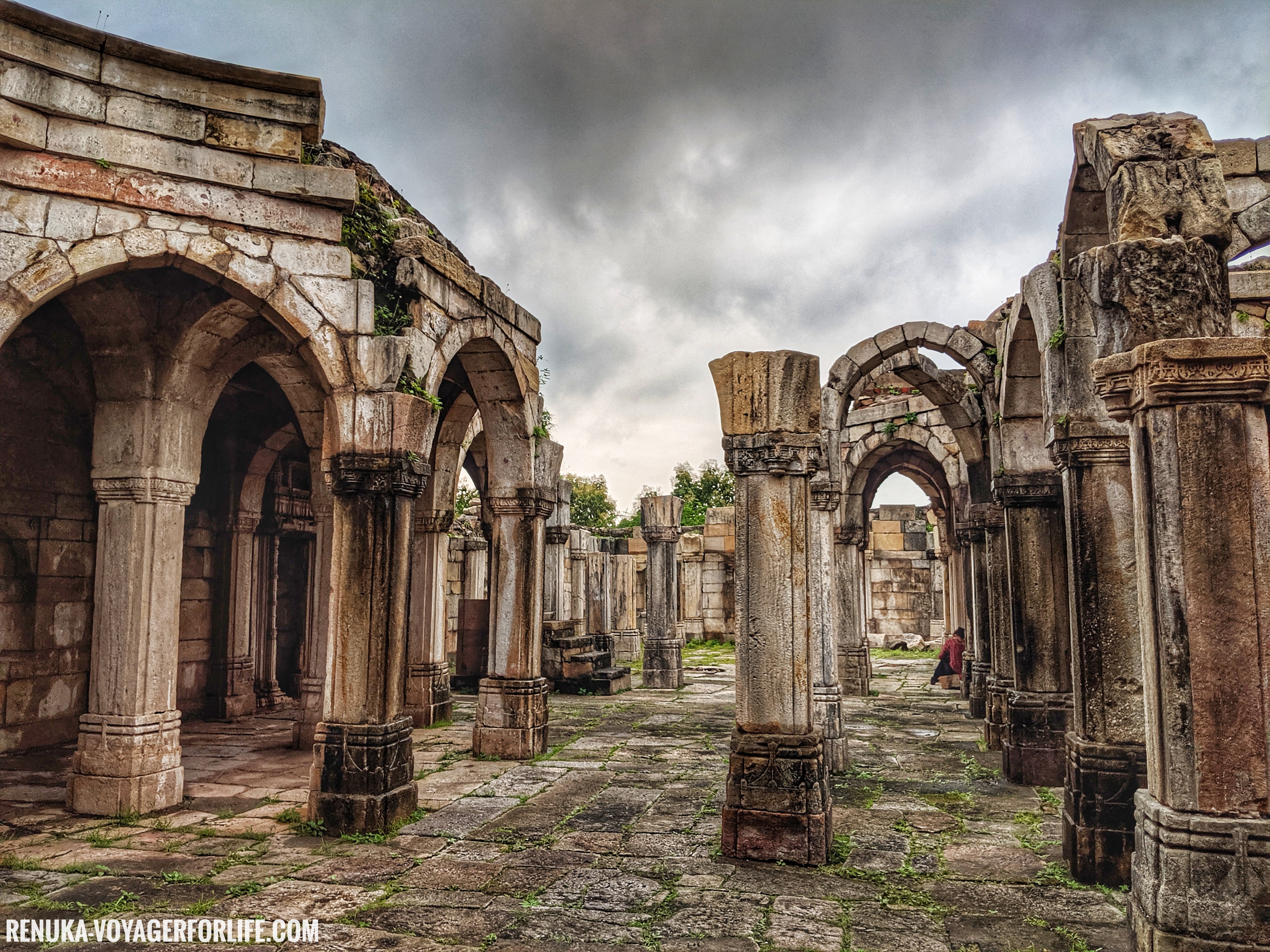
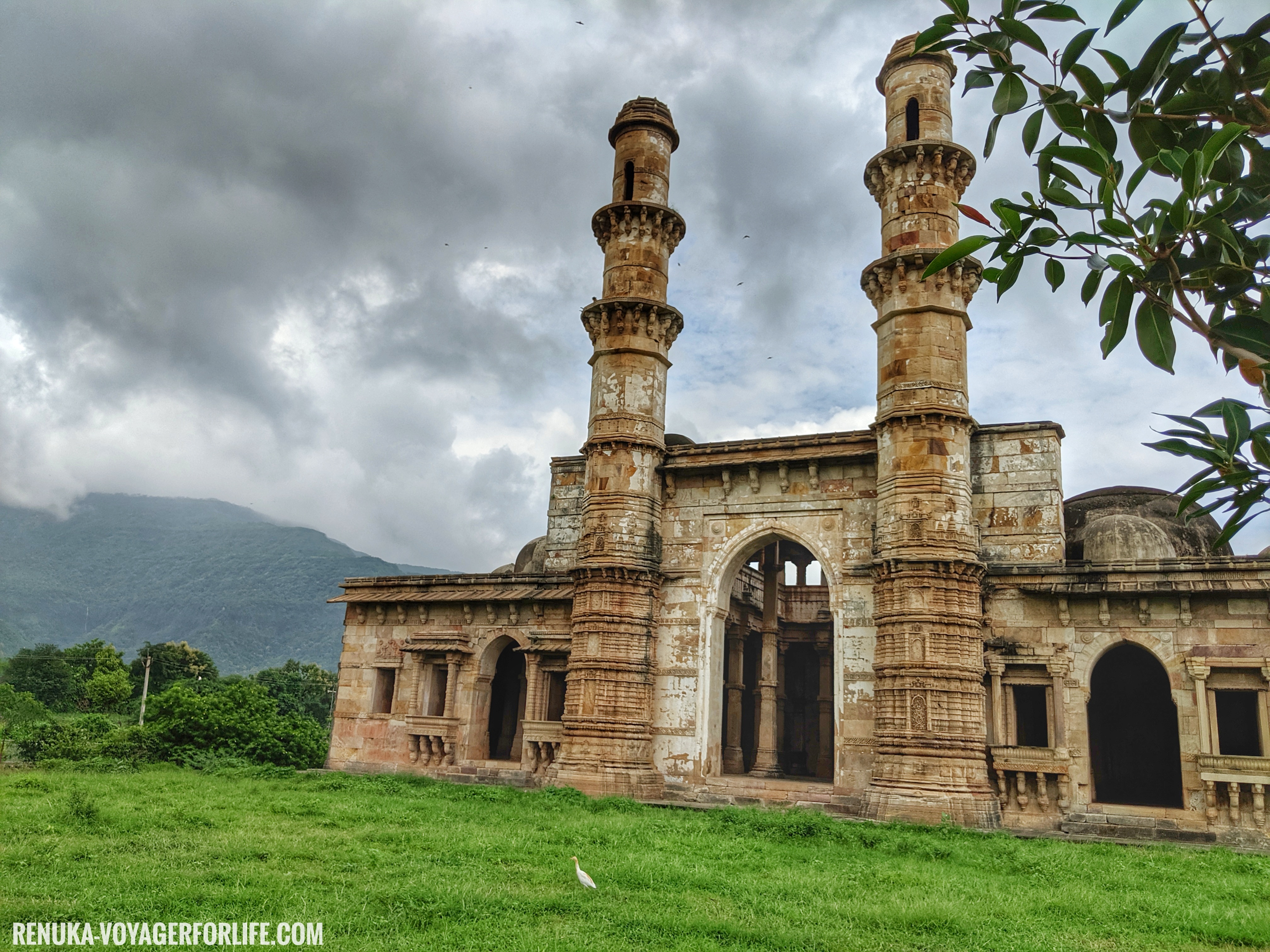
You need to pay just one entry fee of INR 40 to visit all the sites that come under Champaner-Pavagadh Archaeological Park. You are not allowed to take selfie sticks inside the premises of a mosque, so make sure you have someone to take your pictures.
There is no entry fee for sites like Ek Minar ki Masjid, Bawaman Mosque and Kamani Masjid.
Vadatalav Lake and Kabutar Khana Pavilion
After you have had your share of heritage sites of Champaner, head towards Vadatalav, which is a huge lake along with a hill view. There’s also an abandoned site called Kabutar Khana just across the road. It’s a place to just enjoy the surrounding views and the quietness. You will hear a lot of peacocks, but there’s a rare chance that you will see them.
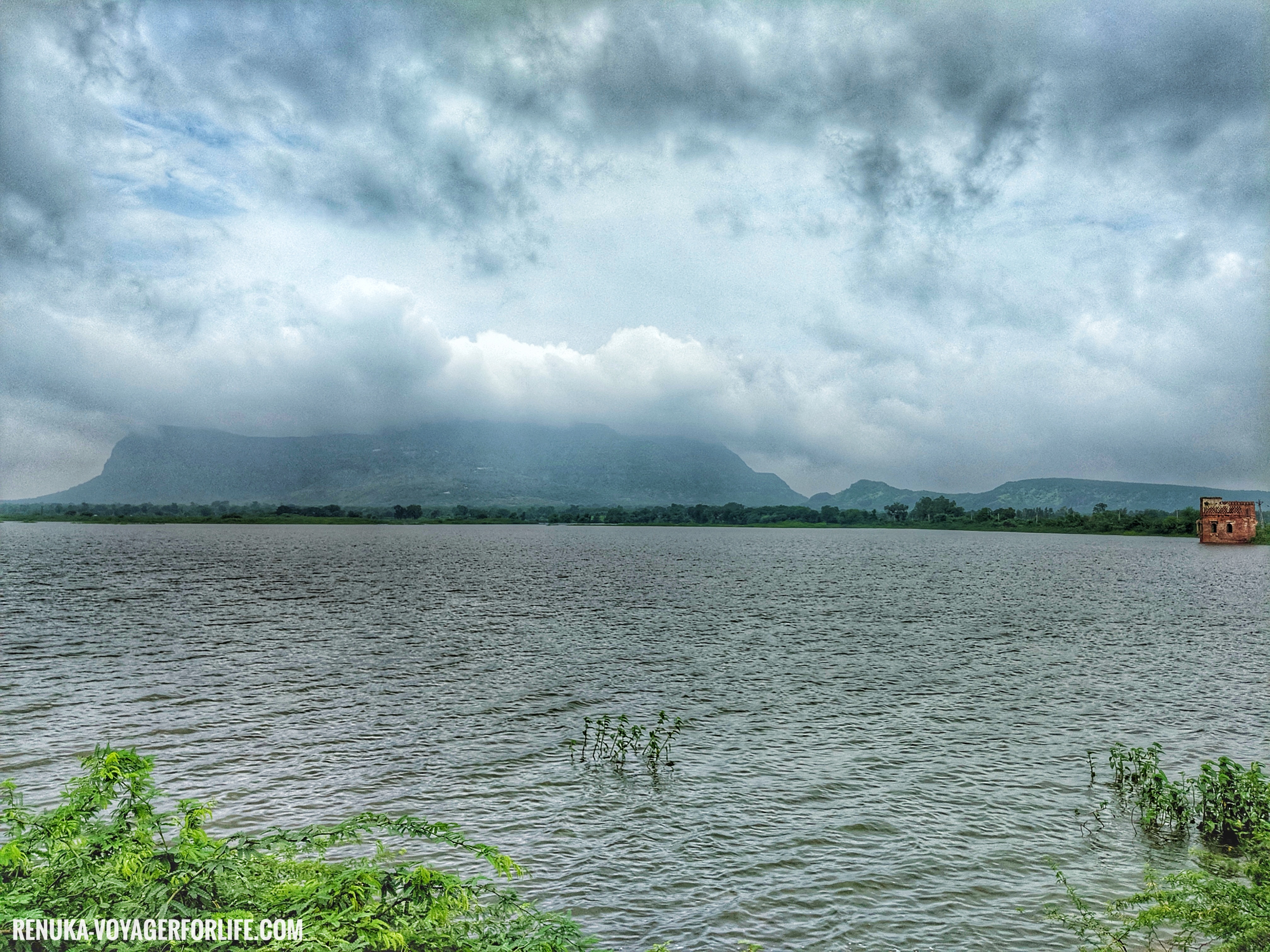
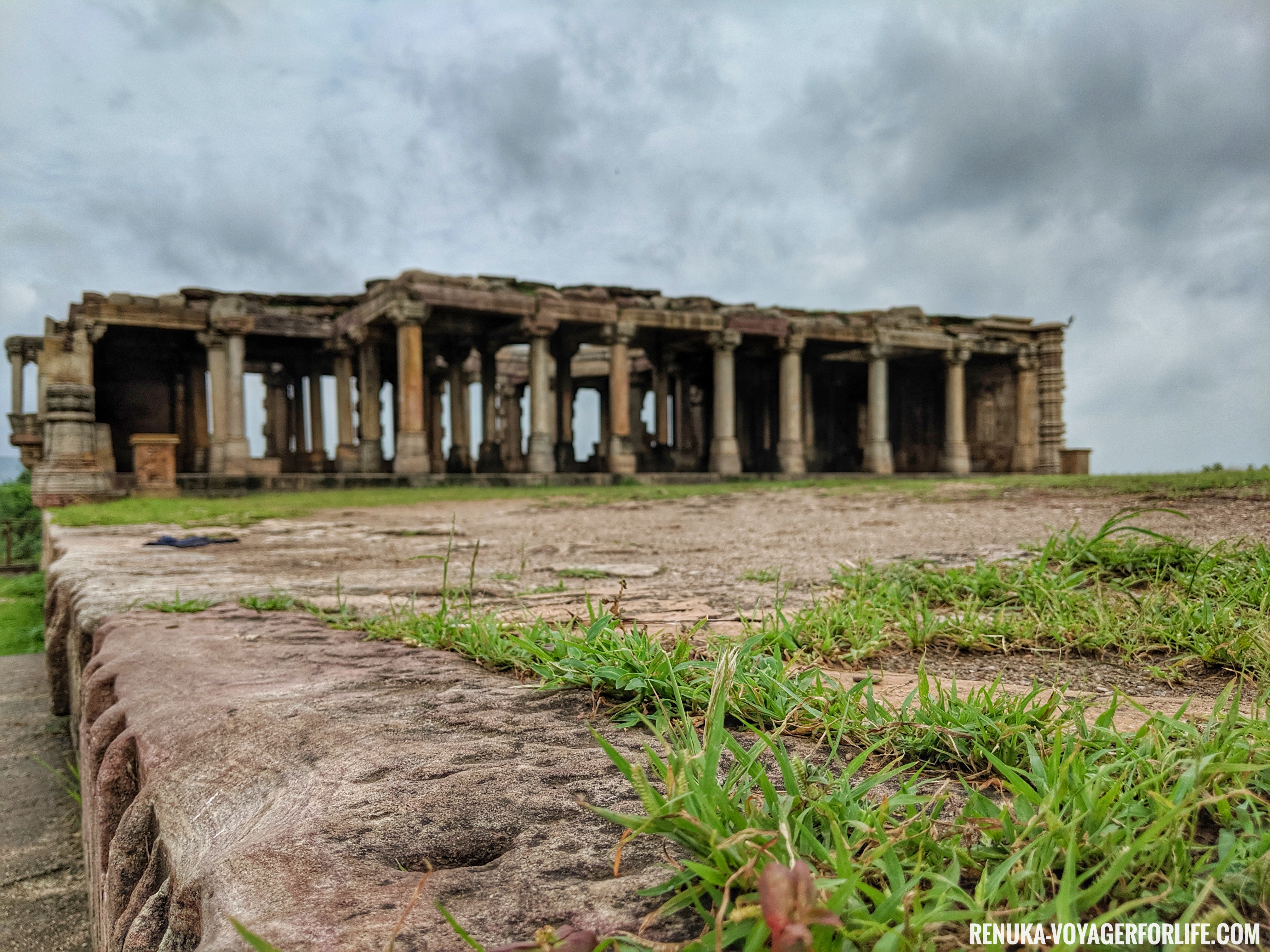
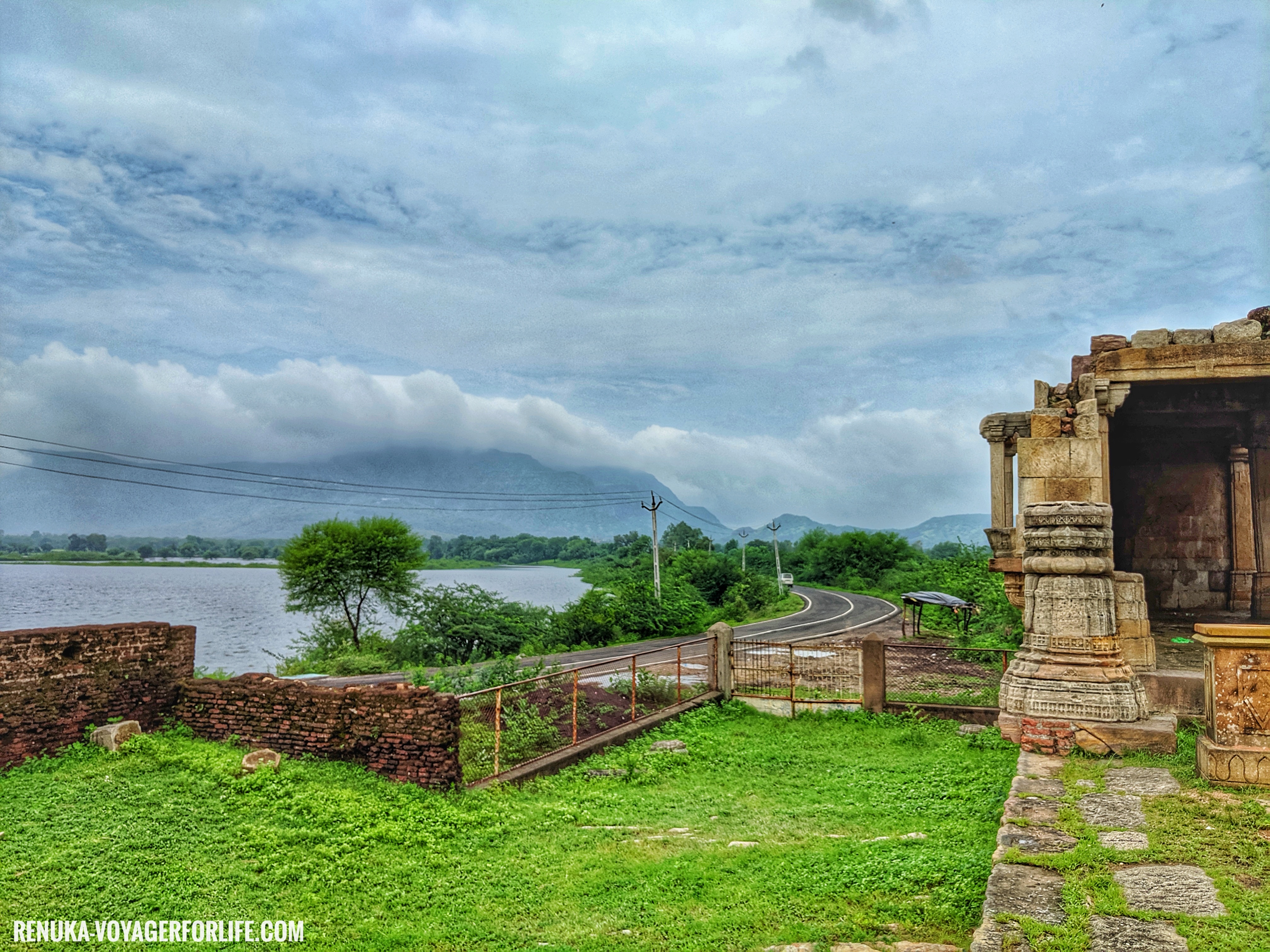
The settlement inside the fort walls
I find it really interesting to see people living inside the old fort walls. The Champaner-Pavagadh Archaeological Park is a huge settlement along with the ancient sites. It reminded me of Lakhpat – an abandoned world at the edge of Kutch. There are homes, shops, temples, schools and farms inside the heritage park. Walking inside the rundown fort walls is quite an experience, as it’s so full of wild vegetation. You do bump into the locals once in a while, but it’s mostly deserted and quiet.
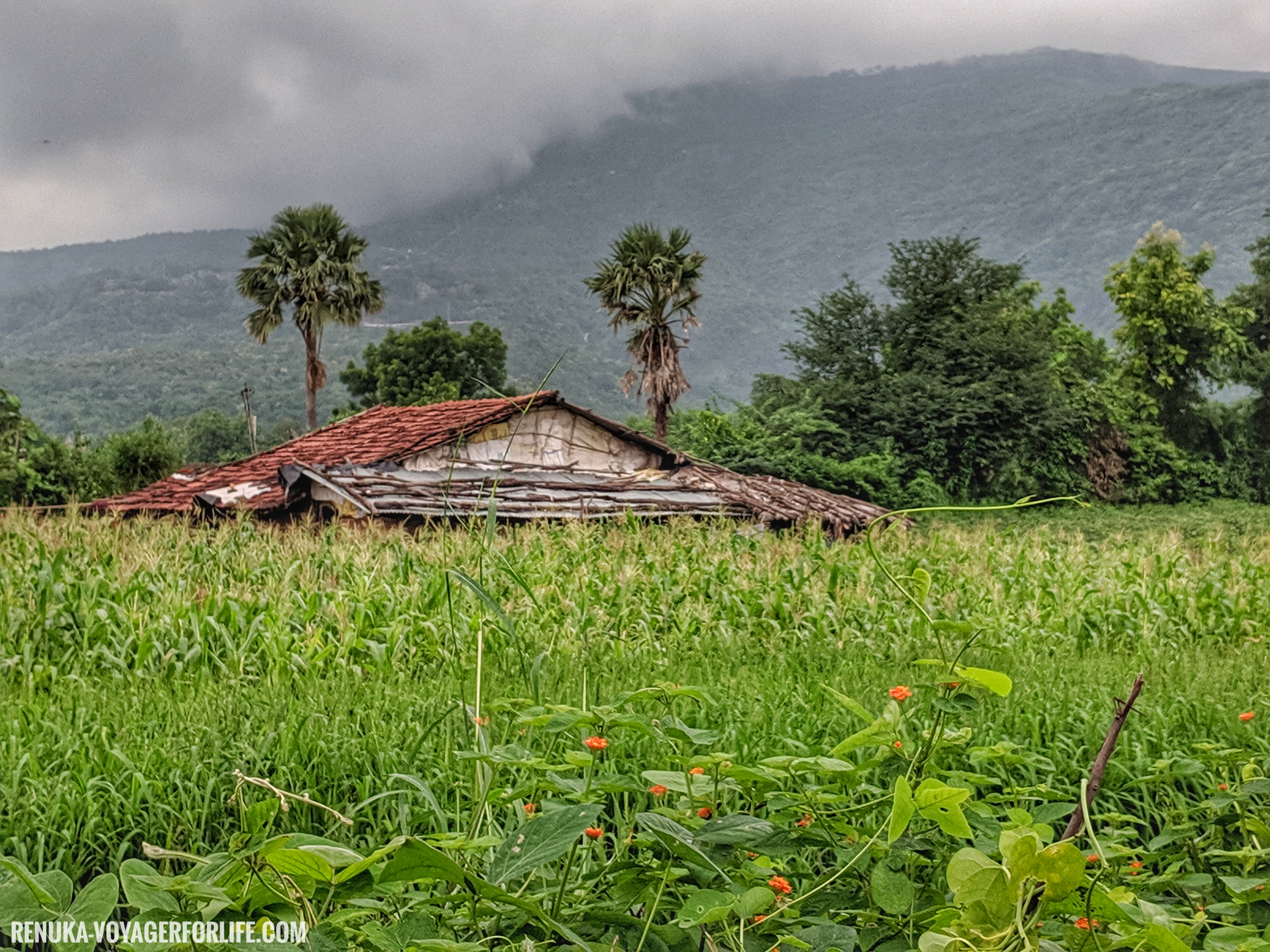
The city of Champaner – its vibe, the new-age cafes
While you explore the ancient treasures of Champaner, don’t forget to check out the new Champaner – the city life, the markets and the modern cafés of Champaner. Although there are not many modern eateries in Champaner, there are a few to please your appetite. I made repeated visits to Rooftop Café and Tea Post. I loved the vibe of these places. The food and the brew were good, too.
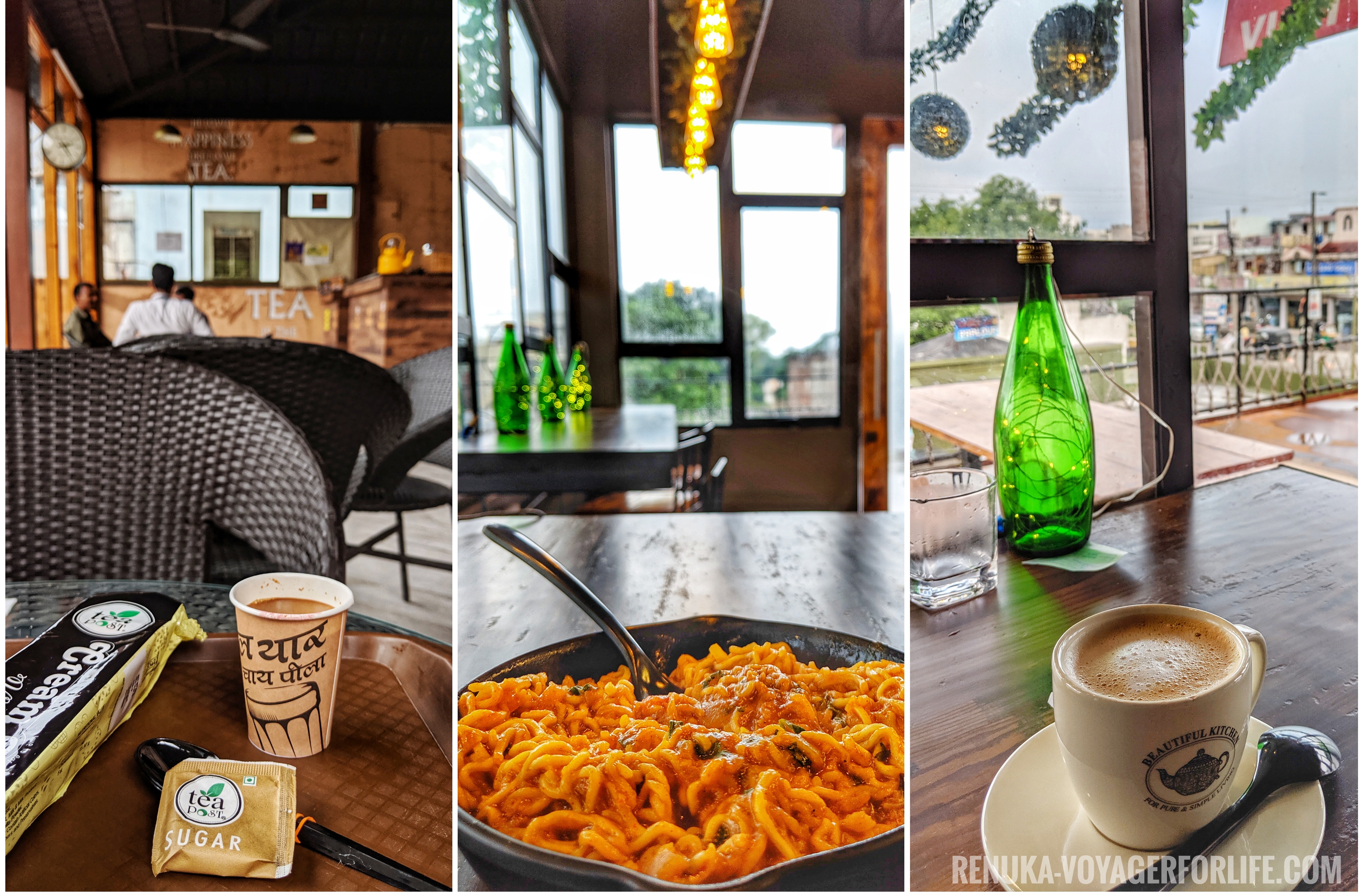
The Pavagadh Hill and the temple
Pavagadh Hill is an obvious highlight of Champaner. It’s also significant because of the temple on top of it, which is visited by many pilgrims. There are Govt. buses available to take you up to a certain point, after which you can trek or travel by ropeway to reach the peak.
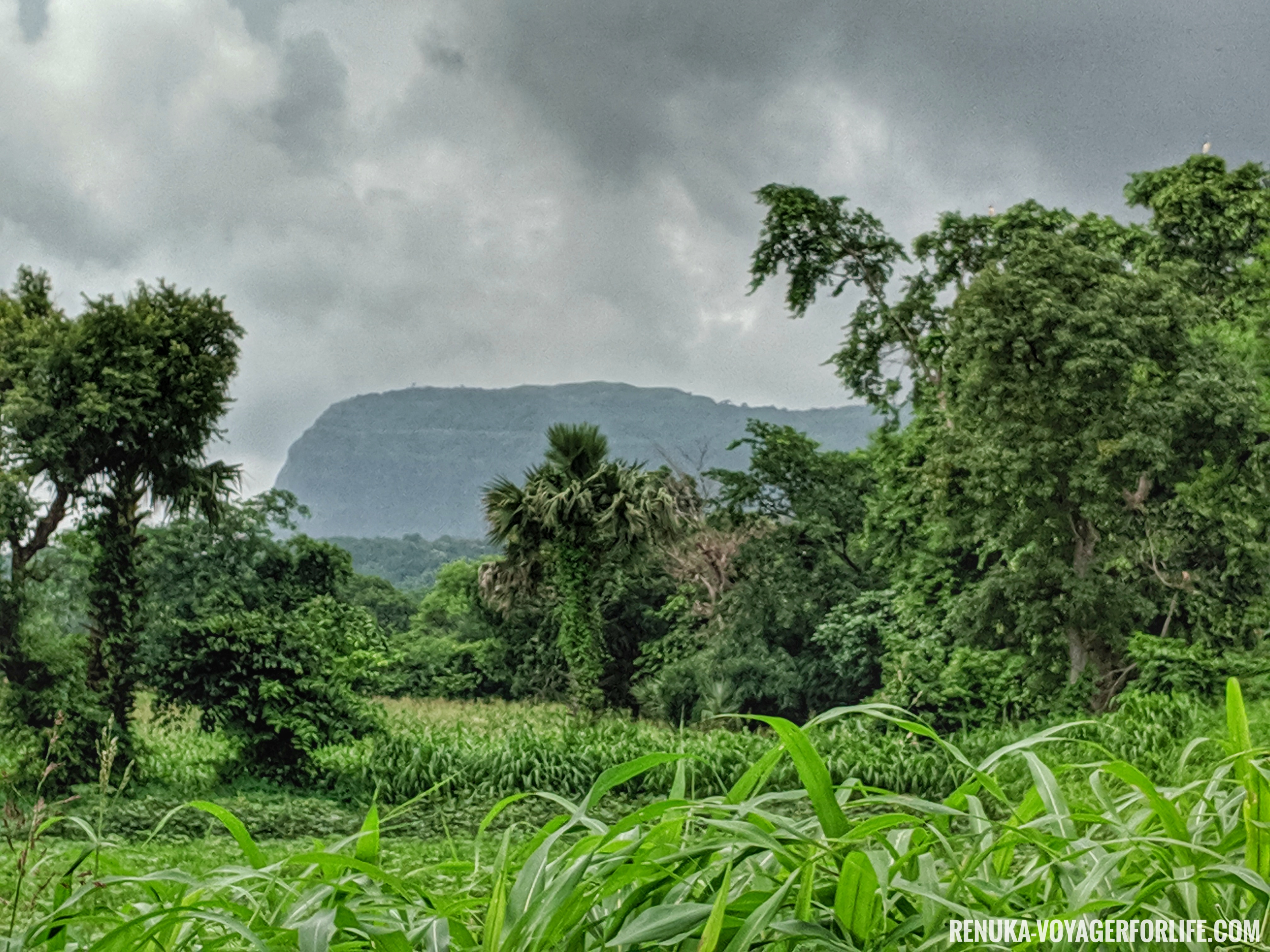
Hotels in Champaner
I stayed at OYO’s Hotel Balaji Inn, a modest guest house at Halol-Pavagadh Road. I got a really good deal of INR 1965 for 3 nights. I’d say it was a decent option in terms of budget and safety. All the historical sites were within 6-8 km from the hotel. Also, the city of Champaner, the markets and the restaurants were at close proximity.
I also stayed at Champaner Heritage Resort, which is in a charming village called Bhamaria, located almost 15 km from the main city.
Booking.com
How to commute within Champaner?
I mostly commuted by autos – shared and private. It’s quite easy to find shared autos in Champaner, and they are very cheap. Also, it’s a good idea to take Chhakra rides, which is one of the best ways to take in the essence of rustic Gujarat.
How to reach Champaner?
There are two ways to reach Champaner – You can either take an overnight train from Mumbai. However, the Champaner railway station is quite deserted. There’s no public transport easily available for you to reach your hotel. You should ideally pre-book your cab with the hotel that you are staying at. Alternatively, you can reach Halol-Pavagadh Road via road (NH 48), which should take around 8 hours.
Disclaimer: This post has affiliate links. If you make a booking through these links, I will earn a small commission at no extra cost to you. Thank you for your support!
Is Champaner your kind of a place?
Enjoyed this post? Subscribe to receive ‘new posts’ straight in your inbox!